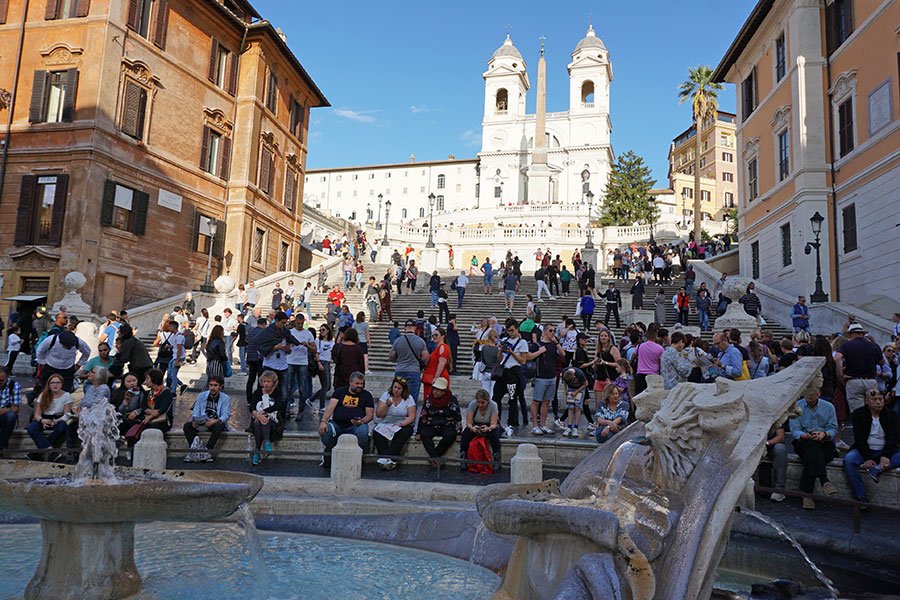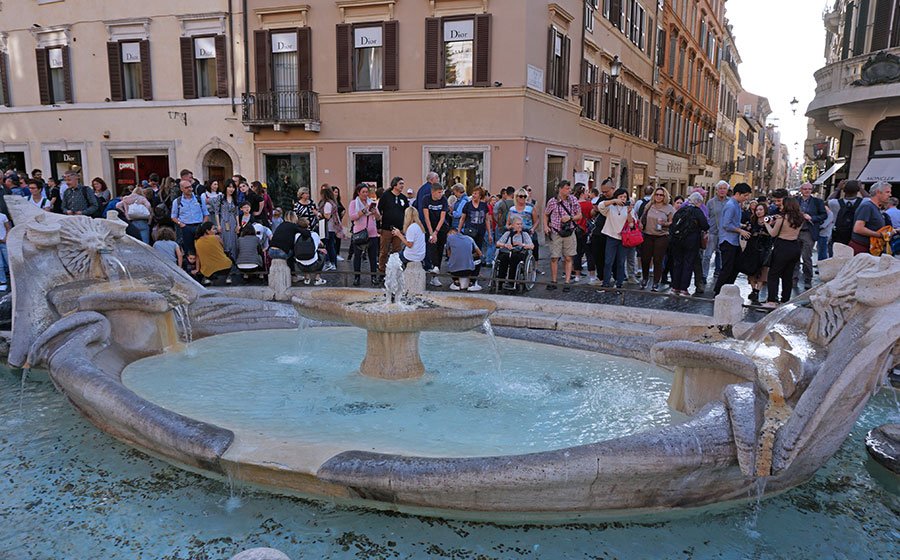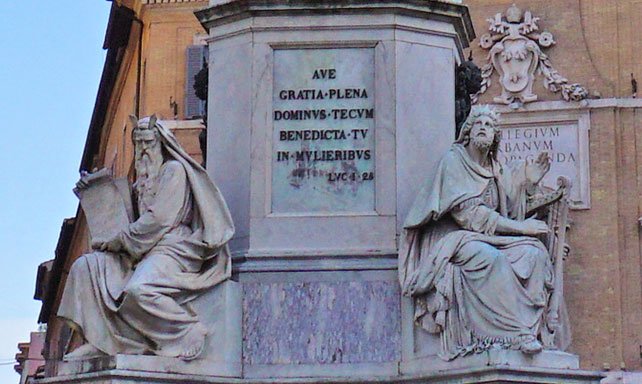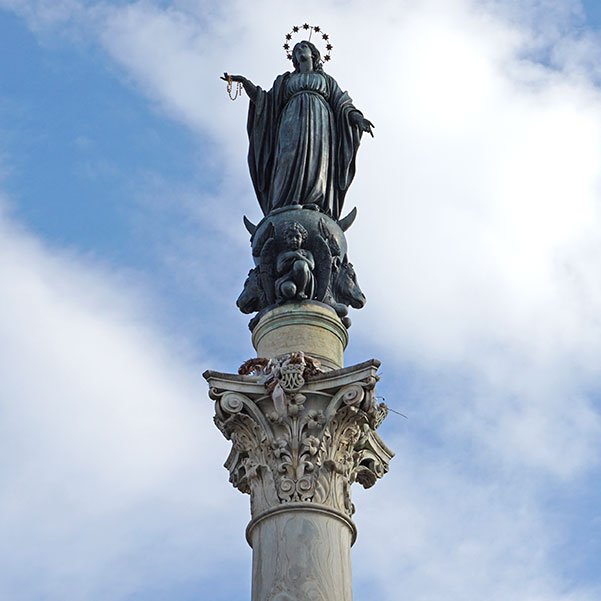Rome’s Spanish Steps
The Spanish Steps or Scalinata di Trinità dei Monti, boasts an impressive 135 steps leading up to the the Trinità dei Monti church at the top. It was built between 1723-1725 and has long been a popular meeting place for artists. Now it’s a posh neighborhood with very expensive ice cream.
☆ For all of the Roman Holiday posts, click here.
Fun facts! The Spanish Steps are in Rome and paid for by a French diplomat, Étienne Gueffier.
The French Connection
“It was built in order to link the the Trinità dei Monti church that was under the patronage of the king of France, with the Spanish square below. The long, triangular Spanish square is named after the Spanish Embassy to the Holy See. In the 17th century, the area around the embassy was even considered Spanish territory. The idea of connecting the church with the square below originates from the 17th century, when the French also planned a statue of King Louis XIV of France at the top of the staircase. This plan was never executed, due to the refusal of the Pope.” [read more…]
Fontana della Barcaccia
The elegant Baroque-style Fontana della Barcaccia sits at the bottom of the stairs. You may notice it looks like a tub or a boat. And if you’re Italian you’ll laugh and say, “Yes silly tourist, that’s what the name means – Fountain of the longboat.”
“Pope Urban VIII commissioned Pietro Bernini in 1623 to build the fountain as part of a prior Papal project to erect a fountain in every major piazza in Rome. The fountain was completed between 1627 and 1629 by Pietro possibly along with the help of his son Gian Lorenzo Bernini, especially after his father’s death in August 29, 1629.” [read more…]
There is an old legend that says a fishing boat was carried all the way to this exact spot during a massive flood of the Tiber River in the 16th century.
Piazza Mignanelli
The Column of the Immaculate Conception (La Colonna della Immacolata) is a 19th century monument topped with the a statue of the Virgin Mary, located in the Piazza Mignanelli on the south east side of Piazza di Spagna. It was designed by Luigi Poletti and dedicated in 1857.
The entire structure has a square marble base with statues of Moses, Isaiah, David and Ezekiel. The Cipollino marble column of Corinthian order is 39-foot-tall (9.144 m). The coumn is from ancient Rome and was re-discovered in 1777 during the construction of the nearby monastery of Santa Maria della Concezione.
The top is graced with a bronze statue of the Virgin Mary who is stomping on a serpent, the traditional Catholic symbol of original sin. She means business! And since she had a virgin birth, I guess she’s qualified to stomp on original sin.
John Keats Lived at the Spanish Steps
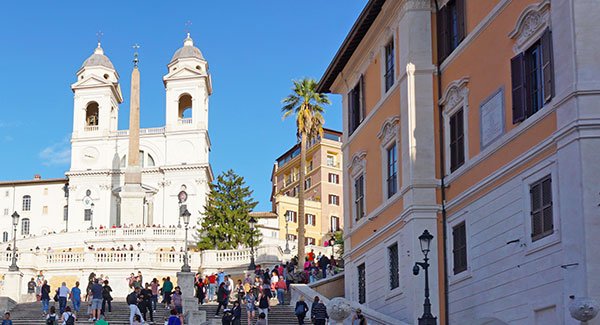
“Situated at the right foot of the Spanish Steps, just a few steps away from Spagna metro station, the Keats-Shelley House is a museum dedicated to the English Romantic poets, who were spellbound by the Eternal City.
26 Piazza di Spagna is most famous for being the final dwelling place of John Keats, who died here in 1821, aged just 25, and to this day Keats’s bedroom is preserved as a shrine to his tragic story and extraordinary talent.
Displayed through a chain of beautiful rooms, the collection contains a great many treasures and curiosities associated with the lives and works of the Romantic poets, as well as one of the finest libraries of Romantic literature in the world; now numbering more than 8,000 volumes.” [read more…]
Don’t Sit on the Steps or You May Be Fined

Seriously. “In a city filled with iconic attractions, Rome’s Spanish Steps are one of the most iconic. Tourists and locals flock to the magnificent baroque landmark, plunking down on the steps and taking a breather from their busy day. Or at least they used to. As Angela Giuffrida reports for the Guardian, Italian authorities are cracking down on what they see as bad behavior that harms the city’s historic center. Among the offenses on the list? Sitting on the Spanish Steps.
This week, according to Giuffrida, police began patrolling the Unesco heritage site, scolding anyone who attempted to take a seat. Those who violate the new rules risk getting hit with a steep fine: €250 (around $280) for sitting on the steps and up to €400 (around $450) should the offender dirty or damage the site, according to Elizabeth Schumacher of Deutsche Welle.” [read more…]
Related Links
• 7 Facts about the Spanish Steps
